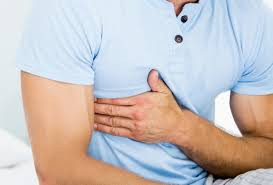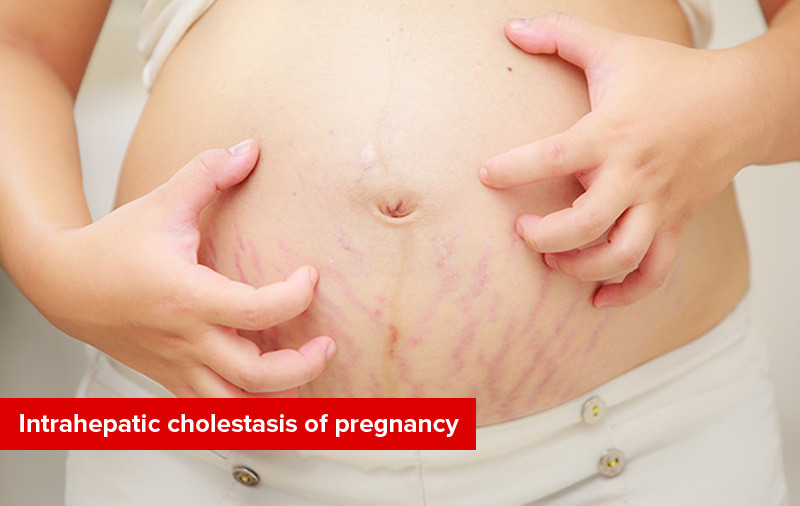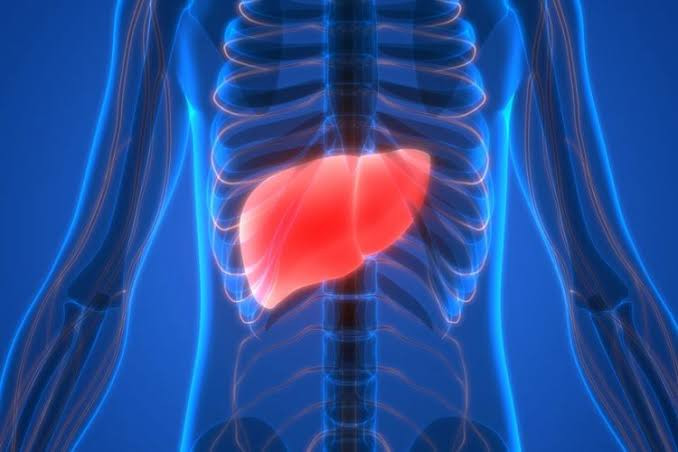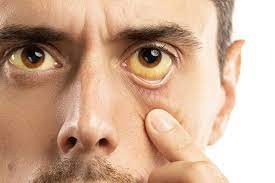Definition
Cholestasis is a liver disease characterized by a reduced flow of bile from the liver, which is caused by the slowing or blockage of bile flow.
Bile is a pigment fluid produced by liver cells (hepatocytes) to aid in the digestion of food, particularly fat. Bile is expelled from the liver and stored in the gallbladder. From there, it flows into the small intestine through the bile duct. In cholestasis, disturbances, such as a disorder in bile secretion by liver cells or a blockage of bile flow in the bile duct, either extrahepatic or intrahepatic, occur.
Clinically, cholestasis leads to the retention of bile constituents in the blood, including bilirubin and bile acids. Biochemically, cholestasis is marked by an increase in serum alkaline phosphatase. This condition can manifest with dominant symptoms such as itching or pruritus and disruptions in the absorption of fats and fat-soluble vitamins.
Causes
The causes of cholestasis from outside the liver or extrahepatic include:
- Tumor in the bile duct
- Cyst
- Stricture or narrowing of the bile duct
- Gallstones in the bile duct
- Pancreatitis
- Pancreatic tumor or pseudocyst
- Pressure on the bile duct caused by a tumor or mass around the bile duct
- Primary sclerosing cholangitis
Intrahepatic causes of cholestasis are:
- Alcoholic liver disease
- Amyloidosis
- Bacterial abscess of the liver
- Lymphoma
- Pregnancy
- Primary biliary cirrhosis
- Primary liver cancer or metastasis from other places
- Primary sclerosing cholangitis
- Sarcoidosis
- Sepsis or serious systemic infection
- Tuberculosis
- Viral hepatitis
Medications that can cause cholestasis include:
- Antibiotics, such as ampicillin or other penicillins
- Anabolic steroids
- Birth control pills
- Chlorpromazine
- Cimetidine
- Estradiol
- Imipramine
- Prochlorperazine
- Terbinafine
- Tolbutamide
Risk factor
Cholestasis can occur at any age but is more common in children and teens due to the immaturity of the liver in this population. There is no significant difference in the occurrence of jaundice symptoms between males and females. However, females are more at risk for certain types of cholestasis, including biliary atresia, cholestasis induced by medication, and cholestasis caused by pregnancy.
Symptoms
The symptoms of cholestasis include:
- Pale stool
- Dark urine
- Inability to digest certain foods, especially fats and fat-soluble vitamins
- Pruritus or itchiness
- Nausea and vomiting
- Upper right abdominal pain
- Jaundice, characterized by yellowing of the skin or eyes
Diagnosis
Medical interview
To establish the diagnosis of cholestasis, the doctor conducts a medical interview and a series of examinations. In the medical interview, understanding when the symptoms of the disease began is crucial. If the acute disease appears suddenly and rapidly, it indicates an acute disorder. Conversely, if the disease is chronic and exhibits dangerous signs, the possibility of cholestasis may be related to malignancy or other chronic causes.
The doctor also inquires about the type of medications recently taken or previous illnesses, such as sepsis and liver disease.
The presence of severe symptoms such as jaundice accompanied by nausea, vomiting, weakness, fatigue, and decreased appetite (prodromal phase) directs the diagnosis toward viral hepatitis. Previous travel history, sexual history, history of blood transfusions, significant surgical history, and history of drug use through the veins can support the diagnostic process.
Chronic cholestasis symptoms may include persistent itching that improves in the morning and worsens throughout the day, especially after morning meals. You may feel tired. Due to the long-term or chronic nature of cholestasis, deficiencies in fat-soluble vitamins, such as vitamins A, D, E, and K, may be found.
Furthermore, this condition can lead to the development of Xanthomas. Xanthomas are deposits of fat on the skin that appear yellowish around the eyes or on the palms of the hands and in some other parts of the body.
Physical examination
On physical examination, the doctor will observe yellowing of the skin or eyes, known as jaundice. However, jaundice is not always present in cholestasis. The doctor may also identify signs of underlying diseases, such as spider angioma, which is a sign of liver cirrhosis, or evidence of needle usage associated with intravenous drug use.
Abdominal examination is also performed, and the doctor may discover upper right or epigastric pain, which can be indicative of cholestasis.
Diagnostic test
Laboratory tests are conducted to identify elevated levels of bilirubin in the blood (hyperbilirubinemia) and increased serum alkaline phosphatase.
Imaging studies based on indications include abdominal CT scan, MRI, Endoscopic Retrograde Cholangiopancreatography (ERCP), or abdominal ultrasound (USG). Ultrasound is particularly useful for identifying any biliary duct dilation and diagnosing cholestasis caused by liver cell disorders or blockages in the bile duct. In cases of blockage, ultrasound may reveal dilation of the bile duct. However, if the cholestasis is due to a disorder of liver cells, the bile duct may appear normal without dilation.
For cases of intrahepatic cholestasis, a biopsy, involving the extraction of a small tissue sample from the liver, may be performed. This sample is then examined under a microscope for further analysis.
Management
Cholestasis is treated based on the underlying causes. If gallstones are identified as the cause, the treatment involves extracting the stones responsible for cholestasis. In cases where cholestasis is caused by narrowing or a tumor in the bile duct, surgery may be recommended. If medication is identified as the cause, the doctor may either stop or replace the medication.
Cholestasis occurring during pregnancy is typically addressed after childbirth, and women may be closely monitored during and after the birth process.
Complications
Some complications of cholestasis include:
- Diarrhea
- Organ failure in sepsis
- Impaired absorption of fat and fat-soluble vitamins
- Severe itching
- Osteomalacia caused by prolonged cholestasis
Prevention
To prevent cholestasis, you can:
- Get hepatitis vaccination if you are at risk.
- Avoid injection drug use that involves sharing needles with others. Needles should only be used once for each person to prevent diseases.
- Avoid alcohol abuse.
When to see a doctor?
Seek treatment if you have symptoms such as persistent itching, yellowing of the skin and eyes, or other symptoms of cholestasis mentioned earlier.
- dr Nadia Opmalina
MedlinePlus [Internet]. K. Lehrer, Jenifer. (MD): National Library of Medicine (US); [updated 2020 May 27]. Cholestasis: MedlinePlus Medical Encyclopedia. Available from: https://medlineplus.gov/ency/article/000215.html
Shah R, John S. Cholestatic Jaundice. [Updated 2021 Jul 19]. In: StatPearls [Internet]. Treasure Island (FL): StatPearls Publishing; 2022 Jan-. Available from: https://www.ncbi.nlm.nih.gov/books/NBK482279/
Bigger, Alana. Everything you should know about cholestasis. [Updated 2018 Nov 13]. Healthline[Internet]. Available from: https://www.healthline.com/health/cholestasis
Nazer, Hislam. Cholestasis. [Updated 2017 Aug 09]. Medscape [Internet]. Available from: https://emedicine.medscape.com/article/927624-overview












